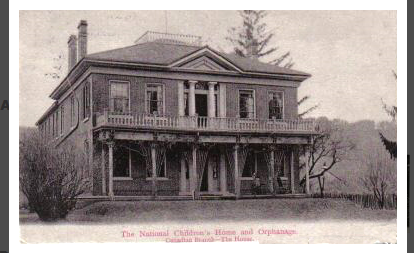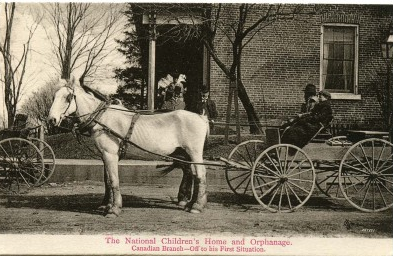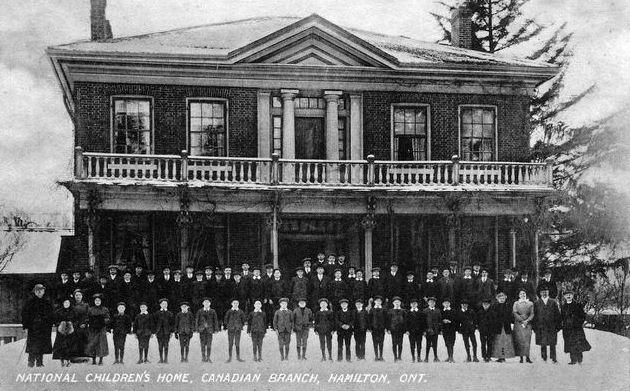 The National Children’s Home – Canadian Branch
The National Children’s Home – Canadian Branch
One of the founding members of the National Children’s Homes in England, Dr. Thomas Bowman Stephenson was a Wesleyan Methodist minister. He was so impressed by other British philanthropists emigrating destitute children to work in Canada that he was inspired to open a home there.
In 1872, Dr. Stephenson visited Canada to look for a location. With the help of local Wesleyan ministers and the Canadian populace, he was able to purchase what he described as a ‘pleasant place’ in Barton township (now Hamilton, Ontario) on about eight acres of arable land on which grapes, peaches, strawberries and more stable vegetables were growing in profusion. This was known as the Canadian Branch of the National Children’s Homes and the first party of children arrived there in 1873. 
The well-built brick Home on the property was to serve three purposes. First of all, it was meant to receive the young emigrants upon their arrival. Their dormitory, dining room and lavatory were located in a large wooden house behind the brick house. The Home was also open to shelter any child who was returned from their placements; and it was a residence and office for the supervisor, who corresponded with the children and visited them at regular intervals.
Once a party of children arrived in Hamilton, a notice was placed in the local newspaper. When the applications for the children were received, each applicant was sent a questionnaire to fill out including ‘the sort of boy or girl he desired to have’. This had to be returned with a certificate of character signed preferably by a Christian minister or magistrate. 
Children were divided into three categories: those who were younger than five or six years old were to be adopted; those who were eight or nine were to be ‘raised’ by families – receiving regular schooling and proper clothing – in return for doing light work around the home and those older children who were to work on a farm, in a shop or in a house for a negotiated sum, in addition to board and lodging.
In all cases, the agreement reserved to the right to withdraw the child if he was improperly treated.
At first, both boys and girls were sent out, but by the end of the 1890s, mostly boys were sent.
The Home in Hamilton at 1050 Main St. East closed in 1931 after an estimated 3400 emigrated British Home Children passed through its doors.
According to Library and Archives Canada, almost 500 former N.C.H. boys enlisted for service in the First World War. Eighty-five percent of the children stayed in Canada. The others either went back to England or migrated to the United States.
